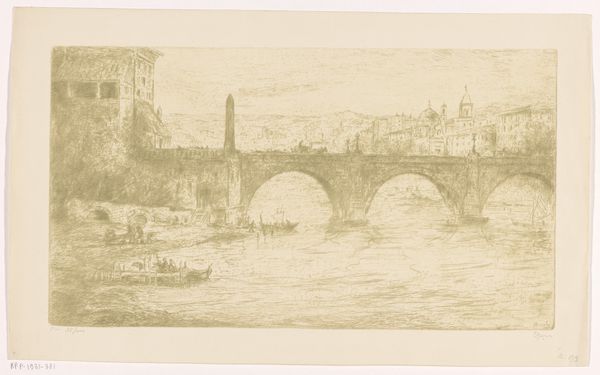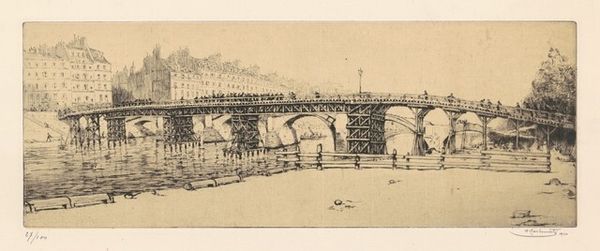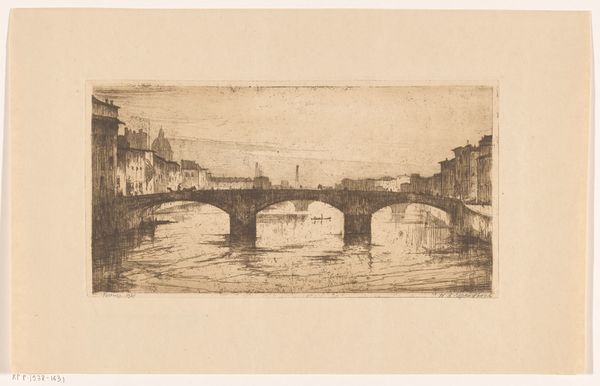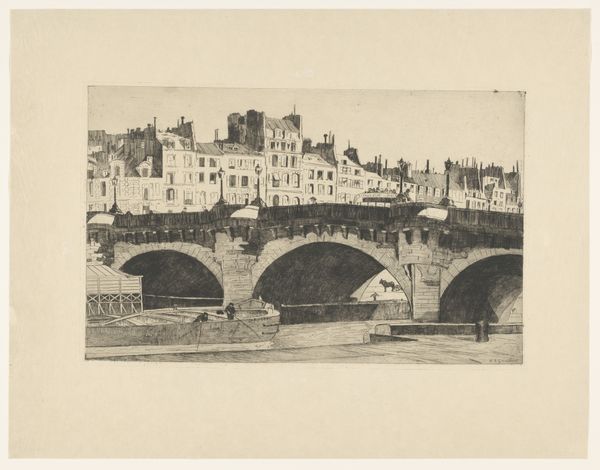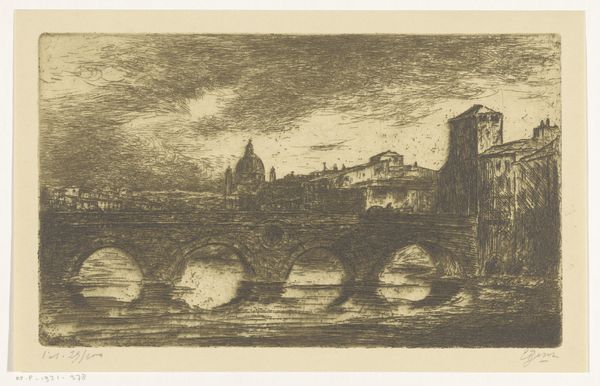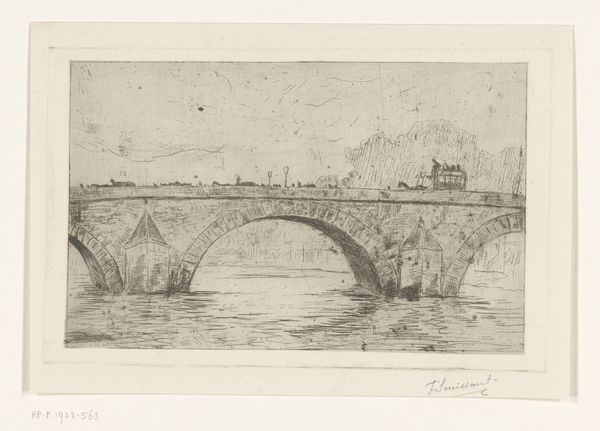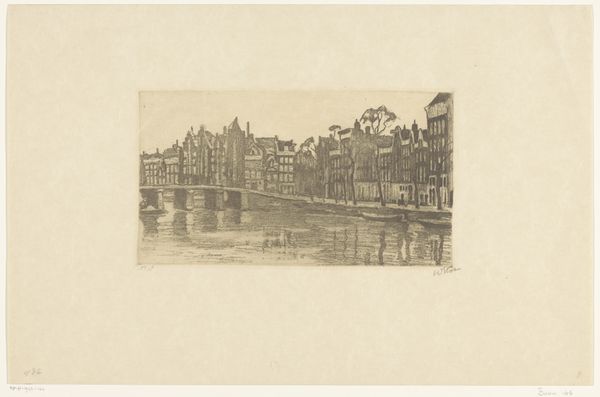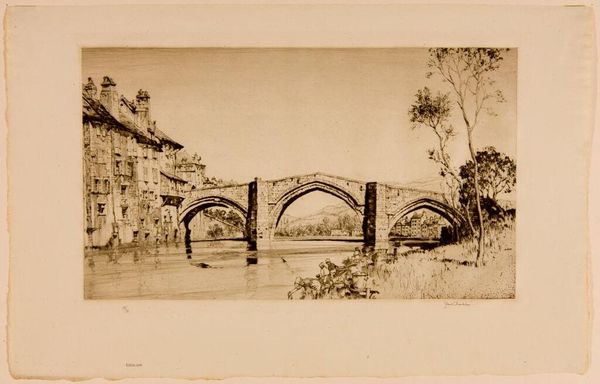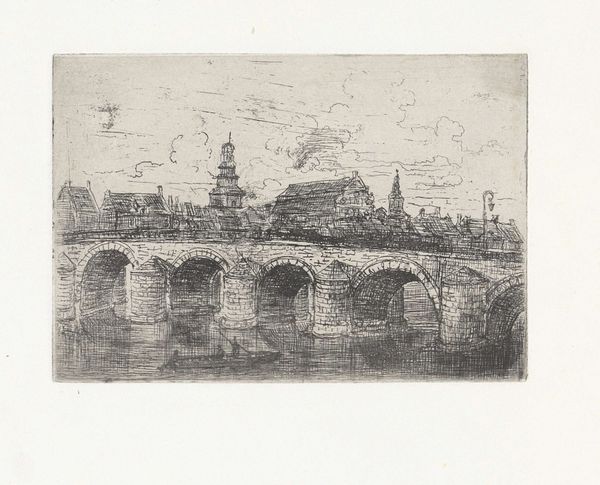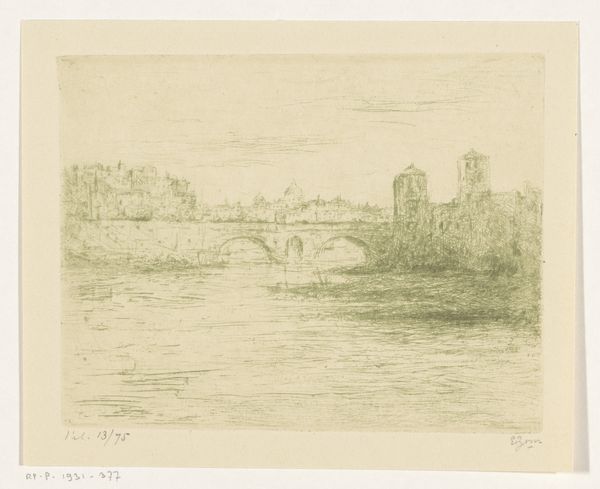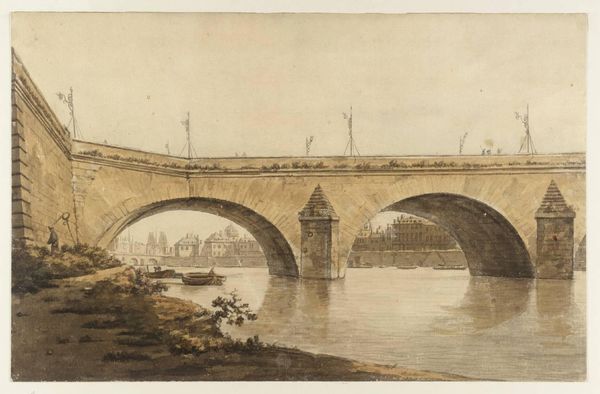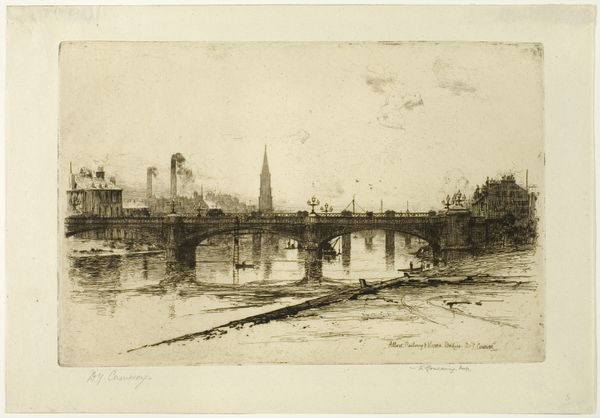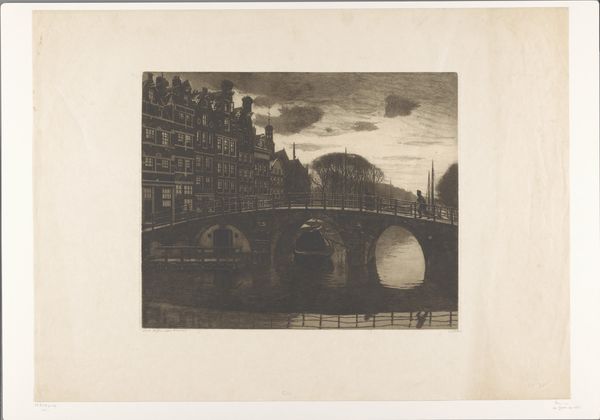
Dimensions: height 226 mm, width 367 mm
Copyright: Rijks Museum: Open Domain
Editor: Here we have "Ponte Vecchio in Florence," an etching likely created sometime between 1873 and 1931 by Etienne Bosch. I find the uniformity of color quite striking; the entire image is rendered in this warm, almost sepia tone. What stands out to you? Curator: As a materialist, what intrigues me most is the etching process itself. Think about the labour involved in creating this image. The copper plate would have been carefully prepared, coated, and then painstakingly etched by hand. The corrosive acid, the selection of paper, the pressure of the printing press… these aren't neutral factors, they shape the very image we see. Consider, too, the socio-economic context. Who was buying these prints of Florence, and what did that consumption represent? Editor: So you're suggesting the appeal isn't just the picturesque scene, but also the implied luxury of owning and displaying it? Curator: Precisely! These images democratized access to famous locations. People who couldn't physically travel to Florence could purchase a print like this, essentially possessing a piece of the city. It becomes an early form of mass tourism, packaged and sold as a commodity. Look at the architecture depicted – how are labor practices visualized there as well? Editor: That's fascinating. I hadn't considered the labor embedded within the artistic process, or its implications on consumption and class. The repetitive architecture becomes representative of mass tourism and consumption through printed etchings. Curator: Absolutely. And understanding those layers unlocks a whole new appreciation for this seemingly simple image. Now, I will look at etching differently. Editor: Me too! It goes beyond just appreciating the scene itself and towards considering its broader cultural and economic implications.
Comments
No comments
Be the first to comment and join the conversation on the ultimate creative platform.
